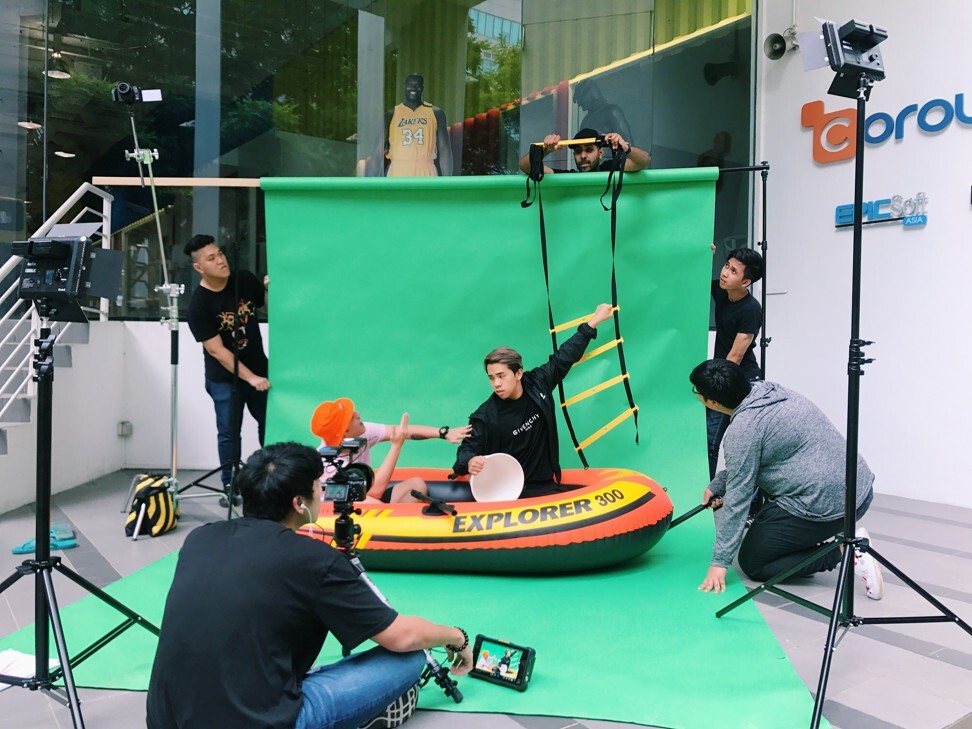
No 1 YouTuber in Singapore JianHao Tan defied critics of his endless high school listicle videos; aged 27, he has a business with a staff of 30
- With 4.25 million subscribers, Tan Jian Hao is the country’s most popular YouTuber off the back of listicles such as ‘17 Types of Students in an Online Class’
- The YouTuber says he never meant to make social media his full-time job, until a client paid him US$11,000 to promote an app in 2014; now he has a staff of 30
You can get a lot of hate as a YouTuber, even when you’re a popular one – just ask Tan Jian Hao, who runs the channel JianHao Tan.
With 4.25 million subscribers, Tan has become Singapore’s most popular YouTuber off the back of hundreds of well-loved, and sometimes derided, listicle videos. Not that this bothers the 27-year-old much. When you’re making seven figures, haters are probably the last thing on your mind.
Tan’s channel catapulted him to fame after it was launched in 2010, thanks to its irreverent content for teens. Think features such as “11 Types of People Stuck at Home”, “17 Types of Teachers You’ll Meet In Every Online Class” and “17 Types of Students in an Online Class” – which, despite drawing 9.1 million views since being uploaded in April, lags far behind the channel’s most popular video, “Good Students vs Bad Students”, which has more than 36 million views.
Tan has done so many listicles, particularly about life in high school, that he’s established a cinematic universe within his channel.
Still, it has drawn criticism for its supposedly formulaic content. In May, someone tweeted: “Are Singaporean YouTubers not tired of the same secondary school content from 2013?” Tan fired back, saying: “This is also the same group of people who say ‘Singaporean YouTubers only do listicles’ but don’t watch anything else we upload.”

“That sort of criticism has got to me in the past,” Tan admits. “There was a time when I really contemplated just giving in and changing all my content. But I thought about our audience – who really enjoys our style of content – so I doubled down.”
He adds, laughing: “It’s now my life goal to make every possible ‘types of people’ video.”
The money allowed the then-21-year-old Tan to buy a new camera and computer, make his first hire – Danial Ron, who’s still a producer with the channel – and rent a dedicated office space for S$3,200 a month. Tan describes this as his best investment ever – not least because it would lay the groundwork for his marketing firm, Titan Digital Media.
Today, Titan provides clients with solutions in the form of digital campaigns and videos: prices range from S$8,000 for a dedicated video to packages that go up to six figures depending on the campaign’s technicalities.
With 30 full-time team members, Tan says Titan’s monthly expenses can reach up to S$100,000 for payroll alone, without accounting for equipment upgrades and “random costs” such as props and set design. In one of Tan’s latest videos, he sets up a giant bouncy castle on the same day he asked for it. In another, Tan says he paid S$1,000 to have a snake appear on camera “just for a few seconds”.

As for his most extravagant expense to date? “I’m not very proud of this, but last Christmas, I thought it’d be a great idea to give my team S$25,000 and challenge them to spend it in an hour, just to see what they would buy,” he admits, sheepishly. “It would’ve probably worked out better if I gave them more time to think.”
Tan’s impulsiveness belies his business acumen – one that comes with developing a model in a field that scarcely existed when he began.
“I don’t blame anyone for thinking that being a YouTuber is easy – I used to think the same until I became one,” says Tan, who now uploads one video a week on his main channel, and several a week on Titan offshoots such as Jebbey Family, a vlog-focused channel featuring Tan, his wife Debbie and their nine-month-old daughter Starley; Ladies First, a female-focused channel; and Titan Gamers, a tech and gaming channel.

“Creating content is just one part of the job,” says Tan. “Finding a niche, understanding the platform’s algorithm, building your own brand and creating a business model behind the channel are vital to finding success on YouTube,” he says, adding that he was also fortunate to have met “amazing people” along his journey.
Tan is also keenly aware of the transience of his platform and his stardom, but he says that he’s “not too worried about being phased out, or having an expiry date”.
“We’ve evolved from just a YouTube channel to a company with three core pillars: a digital marketing agency, a talent management company, and a content network,” says Tan. “We’ve built an ecosystem that nicely positions us in the local media landscape.”
YouTubers turn to subscriptions as virus kills ad income
Aside from social media, Tan says that he’s working to expand Titan’s reach by branching out onto different platforms. Last year, he directed a short film as part of a film anthology by the National Volunteer & Philanthropy Centre, a Singaporean non-profit organisation, and Blue3Asia.
Tan isn’t just investing in himself – one of his long-term goals is building a large studio for content creators to provide them with resources and a network for collaboration.
“As a leader in this space, I see myself as a mentor to younger creators, and I want to help shape the next generation of content creators,” Tan says. “Aside from being recognised for my own merits, I think it’s quite fulfilling to play a part in the success of others as well.”
